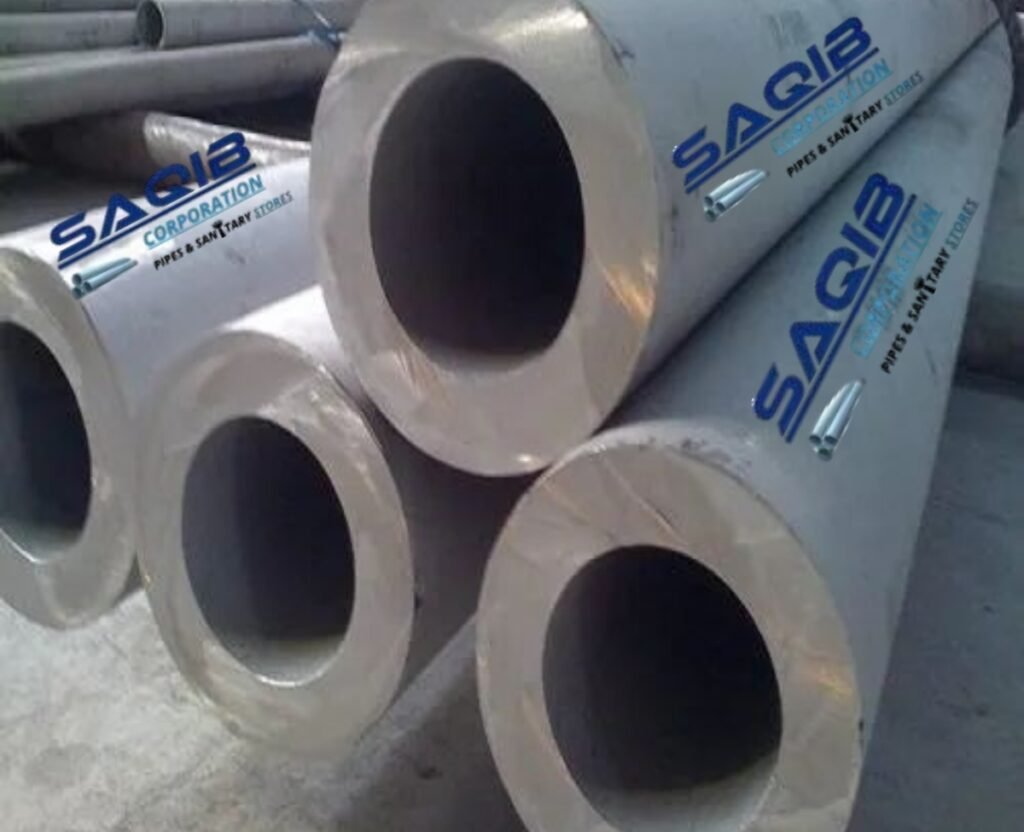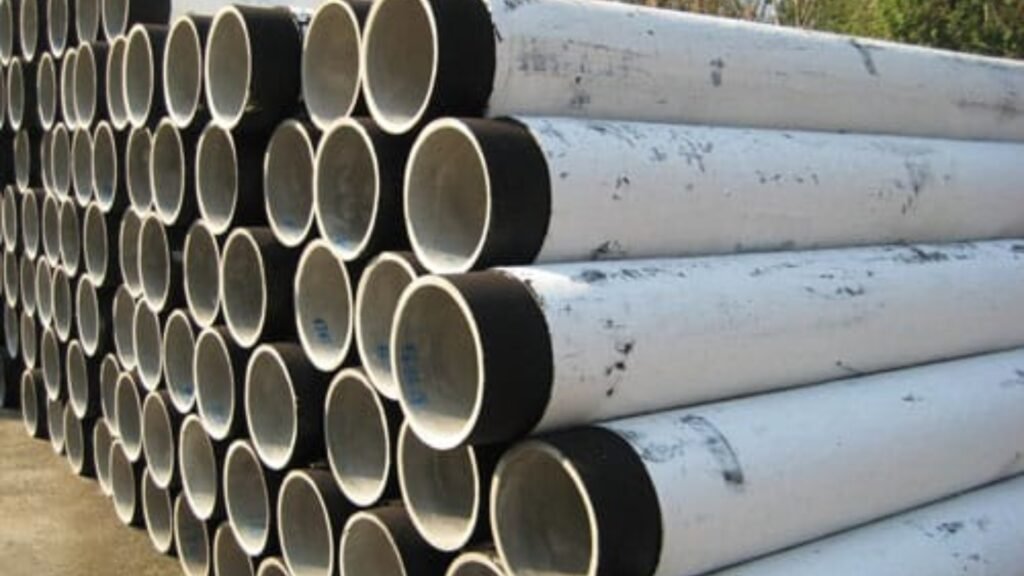Water systems are also very important to have mild steel cement-lined pipes. However, their exterior is made of strong steel. Thus, the inside is lined with a cement mortar. Therefore, the design offers a reliable method of fluid movement.
Then, there is a study that indicates that these pipes are exceptionally tough. Analysts assure there is a service life of more than 150 years. Research points out the fact that they have very good corrosion resistance. Thus, this established life span has seen them become a leading choice for water authorities. Therefore, they are very valuable in the long term in terms of infrastructure.
Lastly, there is the power within these pipes. Now, think of the secret power. Not only does a simple layer of cement serve to preserve steel. It forms an ideal interior water flow surface. Thus, this energy efficiency will save energy each time a drop goes through and make a simple pipe an active investment for generations. However, this paper examines the mild steel cement-lined pipes. Their advantages, applications, and production will be discussed.
What Are Mild Steel Cement-Lined Pipes?
Composite structures are mild steel cement-lined (MSCL) pipes. However, they are made of an outer pipe made of mild steel. This steel shell is lined with cement mortar. Therefore, the steel gives it strength and elasticity. Thus, the cement lining provides a very important protection barrier. It prevents corrosion. It also keeps the contents of the fluid clean. So, this blend builds a strong and cost-effective piping solution. Many large-scale projects across the world prefer it.
The concept is not new. Since the 1840s, pipes have been coated using cement mortar. The process has since developed tremendously. However, the techniques that are being used today create pipes of superior quality and uniformity. They are tailored to satisfy the tough industry safety and performance standards.

Key Benefits of MSCL Pipes
The use of MSCL pipes has some significant benefits. The advantages of these have made them an outstanding option when it comes to water transportation systems.
Superior Corrosion Resistance
One of the greatest risks to steel pipes is corrosion. Oxygen and minerals are dissolved in water. These factors are capable of reducing steel over time. The cement mortar lining serves as a strong shield. It separates the steel and water physically. This leaves contact avoided.
Moreover, cement has an excessively alkaline condition within the pipe. The level of PH is high and it passivates the surface of the steel. A coating of iron hydroxide is formed. This movie prevents the commencement of the corrosion process. The permeability of the lining is also low, and this restricts the infiltration of water and oxygen. This physical and chemical protection is duplicated to guarantee the integrity of the pipe.
Exceptional Durability and Long Service Life
MSCL pipes are built to last. There is high tensile strength in the steel structure. It has the ability to resist a large amount of internal and external load. The cement lining contributes to the rigidity of the pipe. The overall effect of such a combination is a very strong product.
The lifespan of pipes has been proven over decades of studies. Certain tests indicate a lifespan of over 150 years of service. This is because this long lifespan means that it does not require frequent replacements. It offers a great investment with infrastructure in the long term. This strength is one of the reasons why the MSCL pipelines have gained confidence from the water authorities.
Enhanced Hydraulic Efficiency
The movement of water in a pipe is essential. A frictional surface is minimized by a smooth interior surface. The surface of MSCL pipes is highly smooth. This is done through the manufacturing process. A smooth surface reduces turbulence and loss of pressure.
This is to say that water flows more efficiently. Pumping costs can be lower. The system is able to transport more water using less energy. These hydraulic efficiencies save a lot of operational money over the long life of the pipeline. The deposits do not accumulate on the smooth surface, as well. This will assist in sustaining capacity in the long run.
Cost-Effectiveness
MSCL pipes offer a cost-effective alternative. They are not expensive initially compared to other piping materials. Their low maintenance requirements and long service life will really give back to the company. They are durable and hence require less repairs and replacements. This minimizes lifecycle expenses.
The low cost of installation is also a factor that can reduce the cost of projects. They are lightweight compared to other materials and can therefore lower the cost of transportation and handling. These parameters render MSCL pipes a good economic option to undertake massive projects.
The Manufacturing Process Explained
The production of a good MSCL pipe is a manufacturing process that is very specific. The technique makes the lining thick, smooth, and well bonded with the steel. It starts with a pre-cooked mild steel pipe. A slurry of cement, sand, and water is added carefully to the pipe. A high-speed rotation of the pipe then takes place. This is referred to as centrifugal spinning.
The centrifugal force causes the even distribution of the mortar all around the inner circumference of the pipe. It also uses significant force in compacting the mixture. This is what ejects extra water. The product is a highly dense, low-permeability lining. The fact that the water to cement ratio was low gives rise to a lining that is much stronger than the normal cast concrete.
The lining is cured after spinning. This curing time gives the cement time to attain the desired compressive strength. There is close control of the whole process. This is to make all pipes fit within certain standards of thickness and quality. As an example, such standards as ANSI/AWWA C205 formulate these requirements.
Typical uses of MSCL Pipes.
The distinctive characteristics of the MSCL pipes enable them to be applicable in a wide spectrum of applications. They are a flexible solution regarding the transportation of fluids.
Potable Water Transmission:
This is the most widespread one. The cement casing has been approved as not being harmful to drinking water. It helps in the conservation of water quality by avoiding the leaching of metals.
Wastewater and Sewage Systems:
MSCL pipes can accommodate non-septic sewage. In the case of more aggressive wastewater, special types of cement, such as calcium aluminate, may be used.
Industrial Process Piping:
These types of pipes are used in the factories to distribute cooling water, raw water, and other process fluids.
Fire Protection Systems:
They are very strong and reliable and therefore suitable for critical fire mains.
Irrigation and Agriculture:
Irrigation projects are based on the use of the MSCL pipes that allow efficient moving of water over long distances. Desalination Plants: These pipes will be utilized in the transportation of salty water, which is one of the most corrosive liquids.
The Future of a Sustainable Technology.
Cement-lined pipes made of mild steel have an extensive history. Their story is far from over. The market is getting new materials such as plastics and fiberglass. However, MSCL technology has been developing. Manufacturers are coming up with special cement mortars. These new linings can withstand even more vicious chemicals and temperatures.
Replacement of MSCL pipes may not be the true unique future of such pipes, but rather the future will be to integrate them. Consider the smart pipes with MSCL technology as the core. The steel provides strength. The cement offers time-tested protection. Cement can be monitored in real time through embedded sensors needed to check the water quality. They were able to find no stress on the pipe wall. They were able to detect small leaks before they opened huge tears. This makes a passive conduit an active component of a smart water grid.
The pipe is no longer a pipe. It becomes a source of data,a controller of water quality, and predictive maintenance. This combination of a one-hundred-year-old tested and time-tested method, with the current digital technology, can guarantee us that the lowly MSCL pipe will be an important, smart part of our infrastructure over the next 100 years as well.

